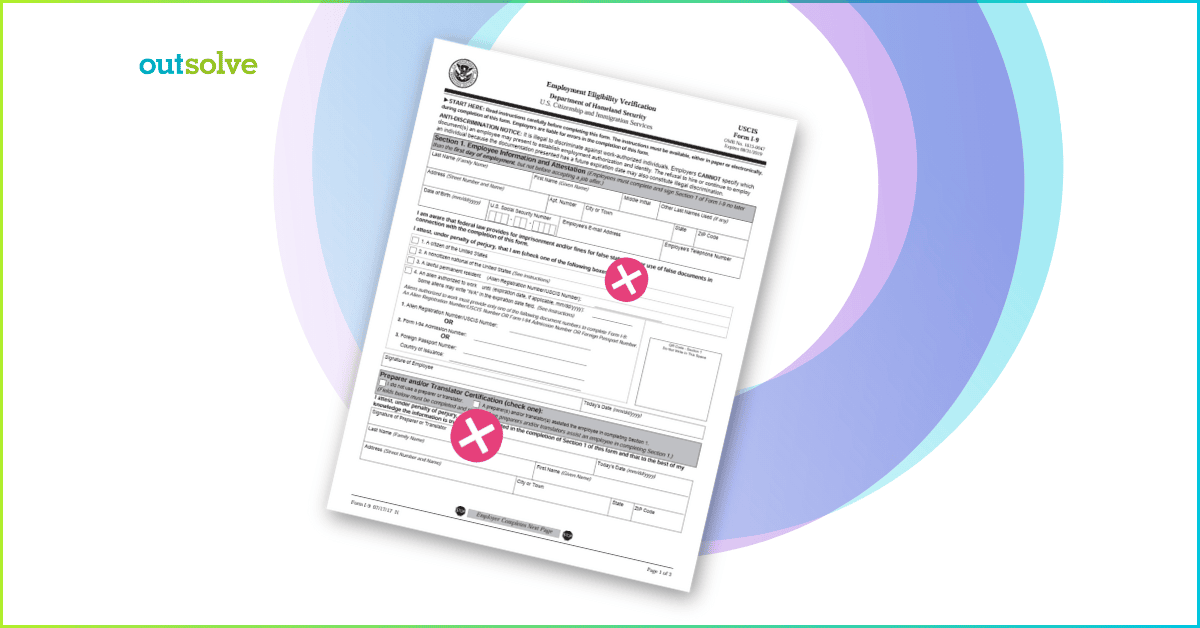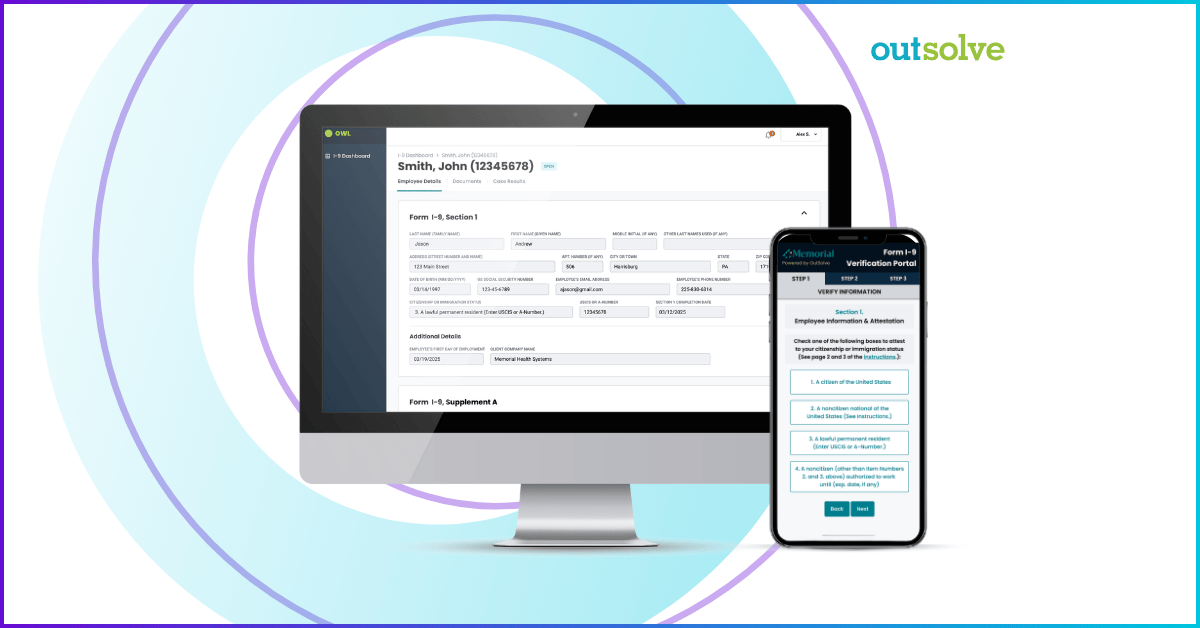 What is an Immigration Enforcement Raid?
Here's What You'll Learn
Renee Arazie
Dec 22, 2025 11:32:27 AM
What is an Immigration Enforcement Raid?
Here's What You'll Learn
Renee Arazie
Dec 22, 2025 11:32:27 AM
Here's What You'll Learn
{% module_block module "widget_1a015403-7932-4a94-9fcd-794fe84f4ed0" %}{% module_attribute "child_css" is_json="true" %}{}{% end_module_attribute %}{% module_attribute "col_1" is_json="true" %}{% raw %}{"animation":{"delay":"none","rellax_speed":1,"reps":"none","speed":"none","type":"none"},"content":[{"bp_font_size":14,"submit_alt":false,"bullet":["ICE raids and inspections are increasing, and employers are often targeted due to industry risk, tips, or I-9 irregularities, not at random.","Enforcement actions can disrupt operations, impact employee morale, strain HR teams, and damage your organization’s reputation, in addition to costly penalties.","Regular I-9 audits, trained staff, consistent processes, and a clear legal response plan help employers stay calm, compliant, and audit-ready should they experience an immigration enforcement raid."],"heading":"Gradient Heading","custom_bullet_style":true,"form":{"message":"Thanks for submitting the form.","response_type":"inline"},"keep_open":false,"gradient_angle":"90deg","animation":{"delay":"none","rellax_speed":1,"reps":"none","speed":"none","type":"none"},"form_help_privacy":{"color":null,"css":"","hex":null,"opacity":null,"rgb":null,"rgba":null},"drop_middle":false,"bullet_point_icon":{"icon_set":"fontawesome-6.4.2","name":"Circle Check","type":"SOLID","unicode":"f058"},"link_opts":{"link":{"no_follow":false,"open_in_new_tab":false,"rel":"","sponsored":false,"url":{"content_id":null,"href":"","href_with_scheme":"","type":"EXTERNAL"},"user_generated_content":false}},"rotation_speed":4,"gradient_color_1":{"color":"#FF00FF","css":"#FF00FF","hex":"#FF00FF","opacity":100,"rgb":"rgb(255, 0, 255)","rgba":"rgba(255, 0, 255, 1)"},"rotating_text_style":"h1","icon_size":18,"gradient_color_2":{"color":"#0600FF","css":"#0600FF","hex":"#0600FF","opacity":100,"rgb":"rgb(6, 0, 255)","rgba":"rgba(6, 0, 255, 1)"},"custom_form_label_colors":false,"lottie_unique_id":"lottie-01","accordions":[],"icon_style":{"color":{"color":null,"css":"","hex":null,"opacity":null,"rgb":null,"rgba":null},"custom_color":false,"size":25},"drop_end":false,"make_link":false,"use_custom_color":false,"dropshadow":{"blur_radius":5,"color":{"color":"#000000","css":"rgba(0, 0, 0, 20%)","hex":"#000000","opacity":20,"rgb":"rgb(0, 0, 0)","rgba":"rgba(0, 0, 0, 0.2)"},"horizontal_length":0,"spread":0,"vertical_length":0},"custom_divider_color":{"color":null,"css":"","hex":null,"opacity":null,"rgb":null,"rgba":null},"rich_text":" Renee Arazie What is an Immigration Enforcement Raid? Refreshing Your I-9 Tools and Process to Stay Compliant
Form I-9 is a federal requirement that carries real consequences if handled improperly. With increased scrutiny on immigration by the current...
Desiree Throckmorton, SPHR
Dec 18, 2025 2:18:51 PM
Refreshing Your I-9 Tools and Process to Stay Compliant
Form I-9 is a federal requirement that carries real consequences if handled improperly. With increased scrutiny on immigration by the current...
Desiree Throckmorton, SPHR
Dec 18, 2025 2:18:51 PM
Form I-9 is a federal requirement that carries real consequences if handled improperly. With increased scrutiny on immigration by the current presidential administration and steeper penalties for noncompliance, now is the time to take a fresh look at your I-9 process to make sure you would be ready for an audit if ICE came knocking.
Desiree Throckmorton, SPHR Refreshing Your I-9 Tools and Process to Stay Compliant An HR Year in Review: Key Updates in 2025
The unpredictability of 2025 has been an uphill trek for HR teams across the U.S. This year brought substantive employment compliance changes to...
Beth Montgomery
Dec 16, 2025 9:25:29 AM
An HR Year in Review: Key Updates in 2025
The unpredictability of 2025 has been an uphill trek for HR teams across the U.S. This year brought substantive employment compliance changes to...
Beth Montgomery
Dec 16, 2025 9:25:29 AM
The unpredictability of 2025 has been an uphill trek for HR teams across the U.S. This year brought substantive employment compliance changes to policies that have been in force for decades.
Beth Montgomery An HR Year in Review: Key Updates in 2025 HR Compliance Mistakes Are Expensive: Here’s How OutSolve Keeps You Covered
HR compliance mistakes are one of the biggest and most avoidable drains on your budget. A single error—whether a missing Form I-9, an outdated...
Beth Montgomery
Dec 9, 2025 9:54:40 AM
HR Compliance Mistakes Are Expensive: Here’s How OutSolve Keeps You Covered
HR compliance mistakes are one of the biggest and most avoidable drains on your budget. A single error—whether a missing Form I-9, an outdated...
Beth Montgomery
Dec 9, 2025 9:54:40 AM
HR compliance mistakes are one of the biggest and most avoidable drains on your budget. A single error—whether a missing Form I-9, an outdated poster, or a misstep in pay transparency—can lead to fines, lawsuits, reputational damage, or even lost contracts. Enforcement agencies are stepping up audits across industries, and penalties are higher than ever.
Beth Montgomery HR Compliance Mistakes Are Expensive: Here’s How OutSolve Keeps You Covered In-House or Outsourced I-9 Management: Which Is Best for Your Organization?
Every U.S. employer, regardless of size or industry, is required by law to confirm each new hire’s identity and verify that they are authorized to...
Beth Montgomery
Dec 3, 2025 9:36:16 AM
In-House or Outsourced I-9 Management: Which Is Best for Your Organization?
Every U.S. employer, regardless of size or industry, is required by law to confirm each new hire’s identity and verify that they are authorized to...
Beth Montgomery
Dec 3, 2025 9:36:16 AM
Every U.S. employer, regardless of size or industry, is required by law to confirm each new hire’s identity and verify that they are authorized to work in the United States by completing a Form I-9. Even small mistakes in I-9 management, like an incorrect date or a missing field, can trigger costly I-9 violation penalties.
Beth Montgomery In-House or Outsourced I-9 Management: Which Is Best for Your Organization? Reduce Risk, Not Resources: Why I-9 Verification Should Be Outsourced
Immigration enforcement is back in the spotlight, with employers squarely in the crosshairs. With a growing, large budget for DHS and a renewed focus...
Renee Arazie
Nov 10, 2025 3:53:25 PM
Reduce Risk, Not Resources: Why I-9 Verification Should Be Outsourced
Immigration enforcement is back in the spotlight, with employers squarely in the crosshairs. With a growing, large budget for DHS and a renewed focus...
Renee Arazie
Nov 10, 2025 3:53:25 PM
Immigration enforcement is back in the spotlight, with employers squarely in the crosshairs. With a growing, large budget for DHS and a renewed focus on workforce audits, businesses of all sizes are discovering how costly even small Form I-9 mistakes can be. From missed reverifications to documentation errors, noncompliance has grown from a quiet, background HR issue to a headline risk with significant financial consequences.
Renee Arazie Reduce Risk, Not Resources: Why I-9 Verification Should Be Outsourced Breaking Down the Notice of Inspection for ICE Audits
Getting a Notice of Inspection (NOI) from U.S. Immigration and Customs Enforcement (ICE) can make any HR professional nervous. While it may seem...
Mary Bruce
Nov 6, 2025 4:13:54 PM
Breaking Down the Notice of Inspection for ICE Audits
Getting a Notice of Inspection (NOI) from U.S. Immigration and Customs Enforcement (ICE) can make any HR professional nervous. While it may seem...
Mary Bruce
Nov 6, 2025 4:13:54 PM
Getting a Notice of Inspection (NOI) from U.S. Immigration and Customs Enforcement (ICE) can make any HR professional nervous. While it may seem intimidating, understanding what an ICE audit involves and knowing how to respond can make the process less stressful.
Mary Bruce Breaking Down the Notice of Inspection for ICE Audits Preparing for Seasonal High-volume Hiring: Streamlining Your I-9 Process
Seasonal surges bring more than increased foot traffic and new faces. They also bring a significant hiring spike.
Angele Ruddy
Nov 3, 2025 12:30:41 PM
Preparing for Seasonal High-volume Hiring: Streamlining Your I-9 Process
Seasonal surges bring more than increased foot traffic and new faces. They also bring a significant hiring spike.
Angele Ruddy
Nov 3, 2025 12:30:41 PM
Seasonal surges bring more than increased foot traffic and new faces. They also bring a significant hiring spike.
Angele Ruddy Preparing for Seasonal High-volume Hiring: Streamlining Your I-9 Process DHS Ends Automatic Extension of Employment Authorization
The Department of Homeland Security (DHS) just announced an interim final rule related to automatic extensions of employment authorization....
OutSolve
Oct 30, 2025 12:56:15 PM
DHS Ends Automatic Extension of Employment Authorization
The Department of Homeland Security (DHS) just announced an interim final rule related to automatic extensions of employment authorization....
OutSolve
Oct 30, 2025 12:56:15 PM
The Department of Homeland Security (DHS) just announced an interim final rule related to automatic extensions of employment authorization. Employment authorization documentation (EADs) is no longer automatically extended when an alien files to renew their application on or after October 30, 2025.
OutSolve DHS Ends Automatic Extension of Employment Authorization Different Types of I-9 Violations and I-9 Errors
Those in HR know there’s no shortage of forms, compliance checklists, and onboarding tasks, but few are as critical (or as legally risky) as Form...
Angele Ruddy
Oct 30, 2025 12:09:12 PM
Different Types of I-9 Violations and I-9 Errors
Those in HR know there’s no shortage of forms, compliance checklists, and onboarding tasks, but few are as critical (or as legally risky) as Form...
Angele Ruddy
Oct 30, 2025 12:09:12 PM
Those in HR know there’s no shortage of forms, compliance checklists, and onboarding tasks, but few are as critical (or as legally risky) as Form I-9. Designed to verify the identity and employment authorization of individuals hired in the United States, the I-9 seems straightforward on the surface; however, even small mistakes can result in I-9 violations and hefty penalties.
Angele Ruddy Different Types of I-9 Violations and I-9 Errorscompany news

Mary MaddenMay 13, 2025
Need More Help? Contact OutSolve.
We offer HR compliance, anti-discrimination, and fair pay solutions.

.png)



